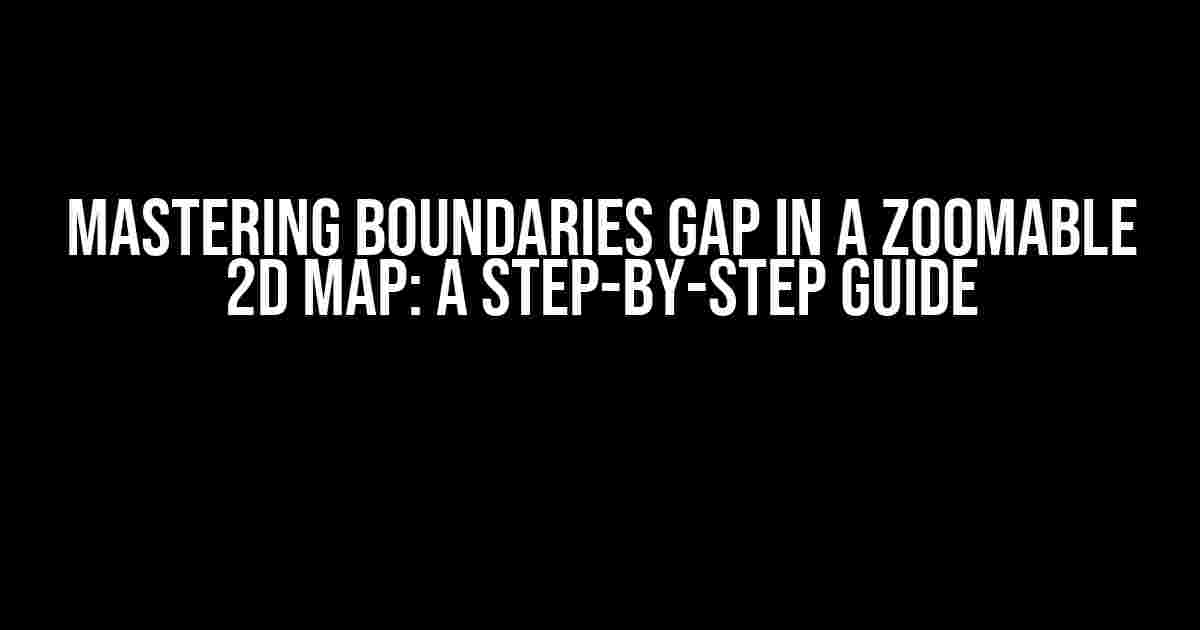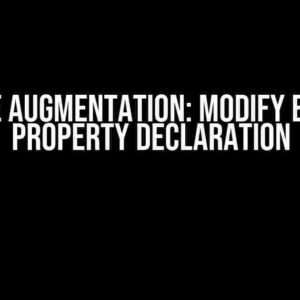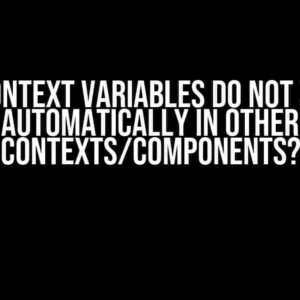Are you tired of dealing with pesky boundaries gaps in your zoomable 2D maps? Do you struggle to create a seamless user experience when zooming in and out of your map? Look no further! In this comprehensive guide, we’ll take you by the hand and walk you through the process of resolving boundaries gaps in a zoomable 2D map.
What are Boundaries Gaps?
Before we dive into the solution, let’s take a step back and understand the problem. Boundaries gaps refer to the visible gaps or seams that appear between adjacent tiles or polygons when zooming in or out of a 2D map. These gaps can be distracting, especially when working with high-resolution images or precise geographical data.
Causes of Boundaries Gaps
There are several reasons why boundaries gaps occur in a zoomable 2D map. Some common causes include:
- Tile or polygon misalignment
- Insufficient tile or polygon overlap
- Inconsistent imagery or data scaling
- Failed tile or polygon caching
- Inadequate map rendering engine
Resolving Boundaries Gaps: Preparation is Key
Before we begin, make sure you have the following tools and resources ready:
- A 2D map with boundaries gaps (e.g., OpenStreetMap, Google Maps, or a custom map)
- A map rendering engine (e.g., Leaflet, OpenLayers, or Google Maps JavaScript API)
- A code editor or IDE (e.g., Visual Studio Code, Sublime Text, or Atom)
- A basic understanding of JavaScript, HTML, and CSS
Step 1: Inspect and Analyze the Map
Take a closer look at your map and identify the areas where boundaries gaps are most pronounced. Use your map rendering engine’s built-in debugging tools or third-party plugins to inspect tile or polygon boundaries. Note the coordinates, zoom levels, and other relevant details.
// Example Leaflet code to inspect tile boundaries
leafletMap.on('zoomend', function() {
console.log('Current zoom level:', leafletMap.getZoom());
console.log('Tile boundaries:', leafletMap.getTileBounds());
});
Step 2: Optimize Tile or Polygon Overlap
Increase the overlap between adjacent tiles or polygons to ensure a seamless transition. You can do this by adjusting the tile or polygon grid size, padding, or offset. The goal is to find the optimal balance between performance and visual quality.
| Grid Size | Padding | Offset |
|---|---|---|
| 256×256 pixels | 16 pixels | 8 pixels |
// Example OpenLayers code to adjust tile overlap
olLayer.setTileGrid(new ol.tilegrid.createForProjection('EPSG:3857', {
tileSize: [256, 256],
padding: [16, 16],
offset: [8, 8]
}));
Step 3: Implement Tile or Polygon Caching
Tile or polygon caching can significantly reduce the number of requests made to your map server, improving performance and minimizing boundaries gaps. Implement a caching mechanism, such as a Least Recently Used (LRU) cache, to store frequently accessed tiles or polygons.
// Example Leaflet code to implement tile caching
leafletMap.on('tileload', function(tile) {
if (!tileCache[tile.x + ',' + tile.y + ',' + tile.z]) {
tileCache[tile.x + ',' + tile.y + ',' + tile.z] = tile;
}
});
leafletMap.on('tileunload', function(tile) {
delete tileCache[tile.x + ',' + tile.y + ',' + tile.z];
});
Step 4: Fine-Tune Imagery and Data Scaling
Ensure that your imagery or data is scaled correctly to avoid visible boundaries gaps. Adjust the scaling factors, image size, or data resolution to achieve a smooth transition between zoom levels.
// Example Google Maps JavaScript API code to adjust imagery scaling
google.maps.event.addListener(map, 'zoom_changed', function() {
var zoom = map.getZoom();
if (zoom >= 15) {
map.setOptions({minZoom: 14, maxZoom: 17});
} else {
map.setOptions({minZoom: 10, maxZoom: 14});
}
});
Step 5: Optimize Map Rendering Engine Settings
Fine-tune your map rendering engine’s settings to optimize performance and minimize boundaries gaps. Adjust settings such as:
- Tile or polygon rendering mode (e.g., canvas, WebGL, or SVG)
- Image or data compression (e.g., WebP, JPEG, or PNG)
- Map projection and coordinate systems
- Zoom and pan animations
// Example OpenLayers code to optimize map rendering engine settings
olLayer.setRenderMode('canvas');
olLayer.setCompression('WebP');
Best Practices and Additional Tips
Follow these best practices to ensure a seamless user experience:
- Use a consistent imagery or data source across the entire map
- Maintain a uniform tile or polygon size and grid structure
- Implement a robust error handling mechanism for tile or polygon loading failures
- Regularly update and maintain your map data and imagery
- Monitor and optimize your map’s performance and rendering quality
Conclusion
Mastering boundaries gaps in a zoomable 2D map requires a combination of technical expertise, attention to detail, and creativity. By following the steps outlined in this guide, you’ll be well on your way to creating a seamless and engaging user experience. Remember to always inspect, analyze, and optimize your map to ensure a smooth and gap-free journey for your users.
Happy mapping!
Frequently Asked Question
Get the lowdown on navigating boundaries in zoomable 2D maps!
What is the boundaries gap in a zoomable 2D map?
The boundaries gap refers to the visual separation or overlap between adjacent tiles or sections in a zoomable 2D map. This gap can cause visual inconsistencies and affect the overall user experience.
Why does the boundaries gap occur in zoomable 2D maps?
The boundaries gap can occur due to various reasons, including differences in tile sizes, inconsistencies in coordinate systems, or incorrect rendering of map data. Additionally, zooming and panning operations can also cause the gap to appear.
How can I prevent the boundaries gap in my zoomable 2D map?
To prevent the boundaries gap, ensure that your map tiles are properly aligned and sized, and that your coordinate system is consistent across all tiles. You can also use techniques like tile buffering, map wrapping, or seamless map rendering to minimize the gap.
Can the boundaries gap affect the accuracy of my map data?
Yes, the boundaries gap can affect the accuracy of your map data, especially if it leads to incorrect renderings or misalignments of map features. This can result in incorrect spatial analysis, routing, or other map-based calculations.
Are there any tools or libraries that can help me fix the boundaries gap in my zoomable 2D map?
Yes, there are several libraries and tools available that can help you fix the boundaries gap, such as Leaflet, OpenLayers, or Mapbox. These libraries provide built-in functionality or plugins to handle tile rendering, boundary management, and spatial analysis.




